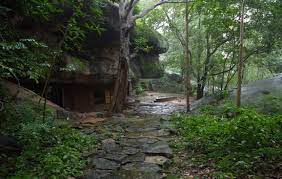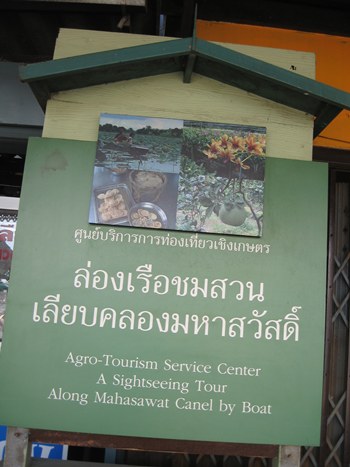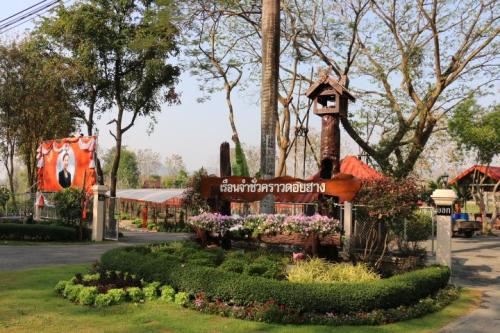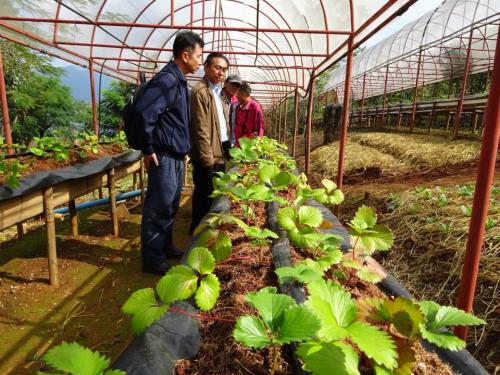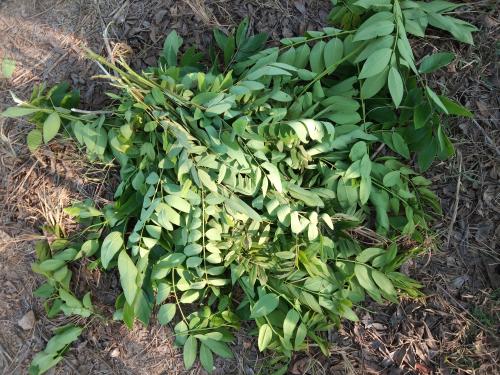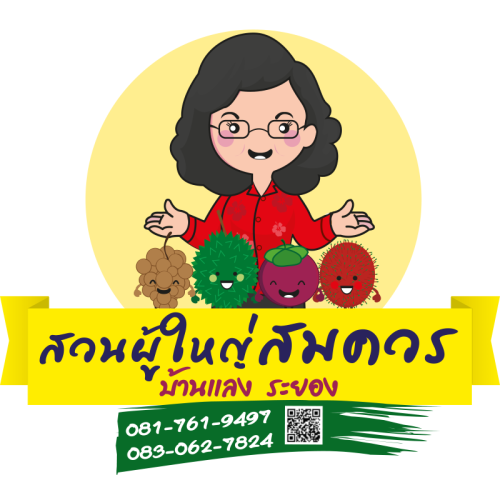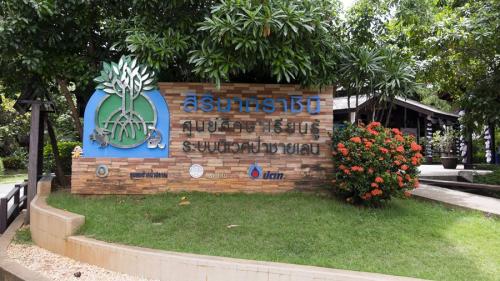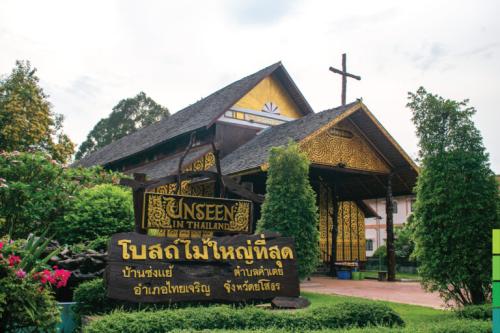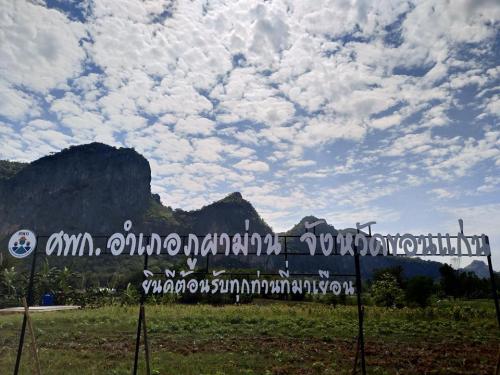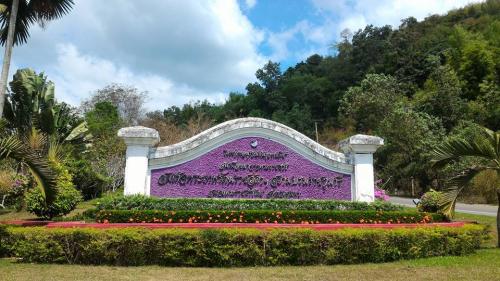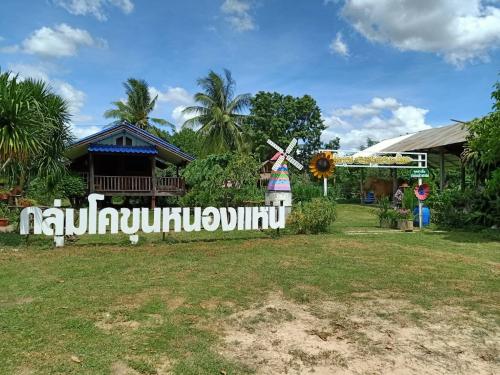Weather
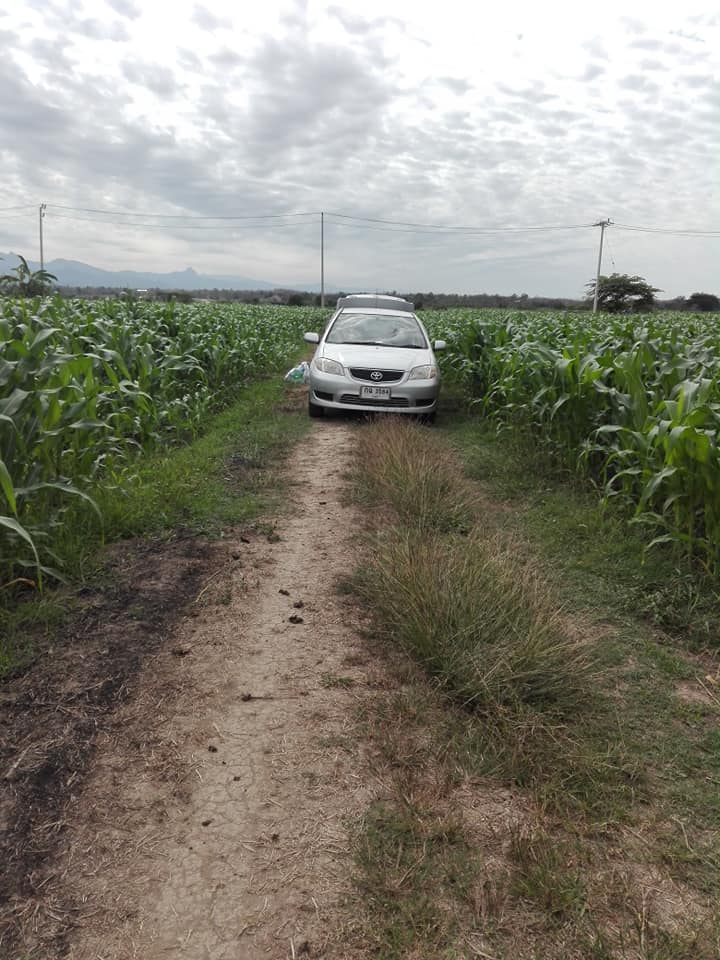
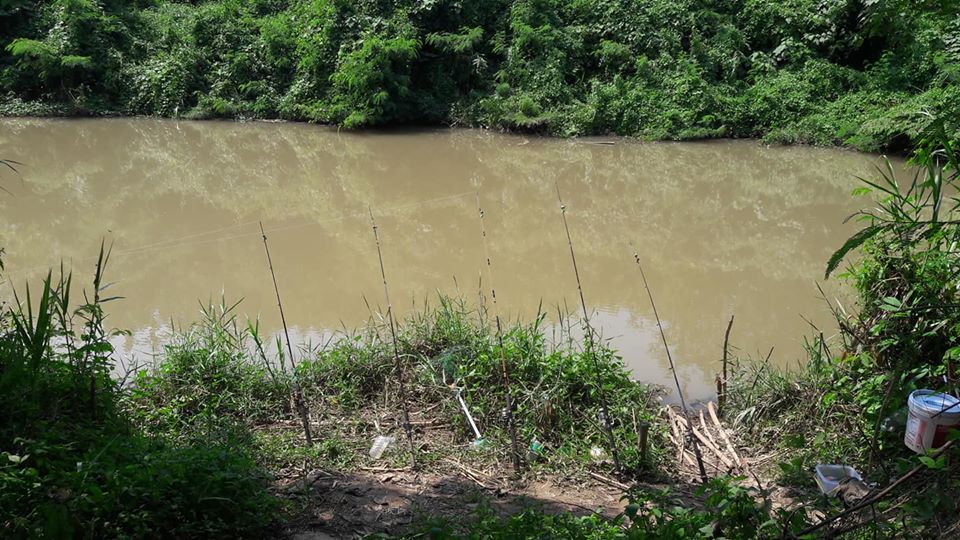
Open
Business hours
• Sunday
: 09:00 - 16:00
• Monday
: 09:00 - 16:00
• Tuesday
: 09:00 - 16:00
• Wednesday
: 09:00 - 16:00
• Thursday
: 09:00 - 16:00
• Friday
: 09:00 - 16:00
• Saturday
: 09:00 - 16:00
Note
: -
Map
Review Score
0
Source
Thailand Tourism Directory
Recommended
Entrance fees
• Entrance fees: Non-fee
• Remark : -
Review (0)
Write Review
0
จาก 5.0
Availability
Value
Service
Relate Agritourism
It is shady orchard where tourists will see durian trees, mangosteen trees, etc. that many people have never seen before. There are also fresh fruit from the garden for sale as well. In addition, this garden has green rambutan for sale that everyone said it was delicious.
Saraburi
Phu Mak Prik is a community forest, in Kut Chum Subdistrict, Kut Chum District, Yasothon Province, in the past, it was an area on Phu Suan Nueng which used to be a source of chili gardening until it has deteriorated. Subsequently, the forest was restored and replanted to become greener again after serious care from the Phu Mak Prik Sect. which developed into a temple of Phu Mak Prik later. And currently, the temple is in the process of building a new half-timbered and half-cemented ubosot amidst the shady nature of trees. It is expected that when finished it will be very beautiful. On Wat Phu Mak Phrik, there is peace and tranquility. It is a shady place to practice meditation. There is also a small viewpoint which those who go up to visit the temple can visit as well. The entrance to the viewpoint might be a bit difficult to see, but you can ask for directions from the monks in the temple
Yasothon
It is agricultural tourism connected to Ban Sala Din
Nakhon Pathom
Doi Hang Temporary Prison under the Chiang Rai Central Prison Implementation of the Royal Initiative Project god nephew Prince Patcharakitiyapha in adopting the Sufficiency Economy Philosophy in prisons so that inmates can adopt the Sufficiency Economy Philosophy of His Majesty the King to actually use after the penalty. It is an encouragement for the inmates and also gives the inmates the opportunity to return to society with skills that can lead a self-reliant life without turning back to commit another crime. It is a learning center for sufficiency economy. Open for systematic visits and visits and is an important check-in point for tourists and the general public who come to use the service.
Chiang Rai
Winter Flowers Learning Plot
- Cymbidium orchid cut flowers
- convert tulips
Myrrh Learning Plot
- Rosemary
- Geranium
How to grow crops in conservation on the highlands learning plot
- Avocado
- Arabica coffee
- Macadamia
Methods for organizing activities
- There is a photo spot, parking lot, restroom available.
- Take a walk around the learning plots (flower plants, fragrant plants, conservation plants) and learn about propagation and planting/care
- There is a point for selling community products, products, vegetables, fruit trees, field crops.
- Drinks, coffee, tea, Jiaogulan are available.
- There is a house / tent camping service.
Participation of tourists
- See, taste, shop, community products, bag products, souvenirs, agricultural products, winter fruit trees, field crops, seasonal vegetables
- Take a photo, check-in, flower/tulip plots
- Take a walk around the learning plot inside the center
- Indulge in the atmosphere of the sea of mist in the winter of Chiang Rai.
Tour program:
2 days 1 night program
Day One
09.30 Depart from Mae Fah Luang International Airport, Chiang Rai, travel to Cherntawan Farm.
10.00 Stop for breakfast at “Phu Thian Resort” / “Jui Kung Pao”
11.00 Cherntawan Rai, study Dharma and the concept of the University of Buddhist Economics (Alternative educational institutions for development according to Buddhist economic philosophy) integrated natural agriculture
12.00 Depart from Cherntawan Farm Stop for a meal at "Lanna Tawanwa" restaurant.
13.00 Watch a demonstration of roasting Assam tea and making Miang, the original model by the farmer community, Mae Loi tea production community.
14.00 Depart from Mae Loi Tea Production Community Enterprise Group To Rai Ruen Ruen, Ngew Subdistrict, Thoeng District
14.30 See the beauty of the organic farm by the new generation, Snack from organic farming plots directly for health, learning and new experiences both principles and actions
15.00 Depart from Rai Ruen Ruen to Doi Pha Mon Center
17.00 Tribal dinner, grilling, activities around the bonfire. along with watching performances from ethnic youth farmers Tribal arts and culture from the community amidst nature and sunset
Day Two
04.30 Wake up, do personal tasks
05.00 Travel to the top of Phu Chi Fa Admire the beautiful natural scenery mountains and sea of clouds
06.00 Return to Doi Pha Mon Center
07.00 Have breakfast
08.00 Enjoy the agricultural activities of the center, Doi Pha Mon, see the fragrant plants, tulips, see the beauty of the Cymbidium plots and learn how to grow coffee, avocado and macadamias, taste fresh coffee. High quality from farmers
12.00 Take a break for lunch
13.00 Travel to Ban Phithak Thai Organic Coffee Producers Group.
13.30 Take a walk around the organic coffee plot by the farmers group of Ban Phithak Thai organic coffee producers. Join to study the process of growing good quality organic coffee. Buy souvenirs from ethnic communities
14.30 Travel to Chiang Rai Clock Tower Important landmarks of Chiang Rai
16.00 Buy community products Local food, souvenirs, souvenirs
Route links to other attractions:
1) Phu Chi Fa, Tub Tao Subdistrict, Thoeng District, 11 km distance
2) Pha Tang, Po Subdistrict, Wiang Kaen District, a distance of 36 km.
3) Doi Chom Dao, Tub Tao Subdistrict, Thoeng District, distance 6 km.
Chiang Rai
The garden is adjacent to the irrigation canal which cause a cool wind blowing all the time. Inside the garden is shady. There are kiosks for tourists to sit, relax and eat the fruits from the garden. The highlight of Pu Yai Somkuan Garden is the gigantic 100 years old mangosteen tree with tall trunk and beautiful bush. The distinctive feature of the 100 years old mangosteen is that it has a thinner shell, more delicious than normal mangosteen; but smaller in size.
Rayong
Sirinat Rachinee Mangrove Ecosystem Learning Center is the first mangrove rehabilitation center from abandoned shrimp farms in Thailand. Originally, it was a shrimp farm located in the Pa Khlong Kao National Forest Reserve - Khlong Khoi, Pak Nam Pran Sub-district. Pranburi District Prachuap Khiri Khan. When the King Rama 9 and the Queen came to Pranburi, The Royal Forest Department responded by canceling the shrimp farming concession and then included as part of the Pak Nam Pranburi Forest Development Project. They accelerated the restoration of mangrove forests and designate them as target areas for reforestation and later develop into a mangrove ecosystem learning center.
Prachuap Khiri Khan
Ban Song Yae Christian Church is located in Thai Charoen district, Yasothon. There is a history in 1908 that there were 5 families who fled from different places to live in this area, they fled for the same reason, which was accused being ghouls and they were therefore attacked and drove away.
It is the 4th church, planned for construction in 1936. Villagers gathered wood and built it in 1947. The shape of the church was built in Thai art style, width 16 meters, length 57 meters. It is the largest in Thailand, using 80,000 wooden planks as roofing boards, using 360 columns of different sizes, mostly wooden poles. The pillars in the middle row are the largest and longest with 260 trees, more than 10 meters high from the ground. The floor planks are of red wood and large Takhian wood. The wooden bench can hold over a thousand people.
The church bell has a diameter of almost 2 feet in a tall bell tower built in the style of a bell tower in typical Thai temples. But strange that it is separate from the church and because the wood that has been gathered is a lot Therefore, the remaining wood was used to build Ban Song Yae Pittaya School.
Yasothon
1 agricultural learning ground of Ban Na Nam Sam, 10 grounds as follow:
1) Learning ground for the production of bio-based substances (Trichoderma, Beauveria, BT, wild microorganisms, nematodes)
2) Charcoal/Wood Vinegar Distillation Learning Ground
3) Local egg raising ground
4) Mushroom cultivation ground
5) Organic Asparagus Planting ground
6) Freshwater fish farming ground
7) The composting ground
8) Herbal Refinery Ground
2 Study natural attractions
1) Pha Nam Thip Cave Sacred water from nature
2) Bat Cave, discover the natural wonders of millions of bats.
3) Chompoo Cave
4) Wat Khao Sam Yot
5) Tad Fa Waterfall
6) Tad Tao water
7) Phu Ta Lor Cave
8) Dong Sakran Viewpoint
9) Dong Lan Forest Development Project
3 agricultural learning resources
1) Growing Asparagus
2) Planting and propagating guava
3) Longan orchard generates income
4) Mushroom cultivation for additional income
tourism program
2 days 1 night program
Learn about agriculture at 1-2 ground center > have lunch > visit Pha Nam Thip Cave > watch bats > have dinner > relax at homestay / Phu Pha Man Camp > Asparagus plot > Golden banana plantation > Khao Temple Sam Yot > have lunch > go back
Note – Tour programs and service fees may change as appropriate.
- 3 snacks
1 day program
Learn about agriculture at center 1-2 bases > have lunch > visit Pha Nam Thip Cave > watch bats > go back
Note – Tour programs and service fees may change as appropriate.
- 2 snacks
Route links with other attractions (with distance/km)
1) Pha Nam Thip Cave Sacred water source from nature, a distance of 3 km.
2) Bat Cave, a distance of 6 km.
3) Chompoo Cave, a distance of 4 km.
4) Wat Khao Sam Yot, a distance of 6 km.
5) Tad Fa Waterfall, a distance of 18 km.
6) Nam Phut Tat Tao, a distance of 12 km.
7) Phu Ta Lor Cave, a distance of 16 km.
8) Dong Sakran Viewpoint, a distance of 18 km.
9) Dong Lan Forest Development Project, a distance of 22 km.
Community enterprise products in the community
1 Ban Son Tai Community Shop, Village No. 3, Ban Son Tai, Non Kom Subdistrict, selling Phu Pha Man folk clothes
2 Ban Non Kom Community Shops, Village No. 1, Ban Non Kom, Non Kom Subdistrict, selling local products and souvenirs.
Khon Kaen
King Bhumibol Adulyadej (King Rama IX) foresaw the significance of plant genetic conservation prior to a recognition of the terms “Biological Diversity” and “Conservation” in Thailand. During the trip to Klai Kang Won Palace, A. Hua Hin, Prachuap Khiri Khan Province in 1960, he passed through A. Tha Yang, Phetchaburi Province and noticed many Yang Na trees (Dipterocarpus alatus). Therefore, he had royal words to collect the seeds to plant at Phra Tamnak Piam Suk, Klai Kang Won Palace, and grow the seedlings at Royal Chitralada Projects to study. In 1985, King Rama IX gave a royal word to conserve jackfruit tress around the Grand Palace and initiated the plant conservation project in the palaces by tissue culture. Later in 1986, he had the royal idea to conserve and breed rattan palms and arrange the herbal garden in Royal Chitralada Projects area.
Her Royal Highness Princess Maha Chari Sirindhorn carried on the plant conservation project by having the royal idea and asked Lord Chamberlain to carry out plant conservation project in June 1992, when the seed gene bank was formed, and study the preservation of non-industrial crops under the royal thought framework.
In 1993, Mr. Sujin Phunikom, the Assistant Subdistrict Headman of Salui and Tha Sae District, Chumporn Province, and his group, cooperated with the Director of Ultra Products Co., Ltd. and the agriculturists in Chumporn Province to establish plant conservation project at the public area located at Moo.6, Salui District (presently Moo. 5 and 6, Salui District, and Moo.4 and 7, Song Phi Nong District). At the same time, the Royal Chitralada Projects was looking for the area to set up the Plant Genetic Conservation Project Under The Royal Initiative of Her Royal Highness Princess Maha Chari Sirindhorn.
Subsequently, Royal Chitralada Projects represented by Professor Prachid Wamanont (the Consultant) and the team met with Chumporn Governor (Mr. Prayoon Promphan) to discuss about the project. The first five years, the project was named “Plant Conservation and Development Project Under The Royal Initiative of Her Royal Highness Princess Maha Chari Sirindhorn, Chumporn Province”. Chumporn Provincial Agricultural Extension proposed the project for the approval from Chumporn Governor and submit the project documents to the Director of Royal Chitralada Projects to respectfully inform to Her Royal Highness Princess Maha Chari Sirindhorn on 26 April 1993. Moreover, Plant Conservation and Development Project was integrated with the royal plant genetic conservation project, which Dr. Pisit Wora-urai was a Chairman. The executives meeting on 9 July 1997 had the resolution to change the project’s name from “Plant Conservation and Development Project Under The Royal Initiative of Her Royal Highness Princess Maha Chari Sirindhorn, Chumporn Province” to “Plant Genetic Conservation Project Under The Royal Initiative of Her Royal Highness Princess Maha Chari Sirindhorn”
Chumphon
Kho Khun Nong Haen Group is a new agricultural attraction for livestock in Yasothon province; by opening a farm to welcome tourists to experience the lifestyle of a community of successful fattening cattle herders at the national level.
Show the knowledge of cattle that are raised like a beloved pet as well as providing knowledge on the integration of groups and raising fattening cattle to generate income. Tourists can go for a day trip or stay overnight in the form of a homestay. In addition, there are beef cattle for sale to tourists who are interested in cooking at home at an affordable price.
Yasothon


